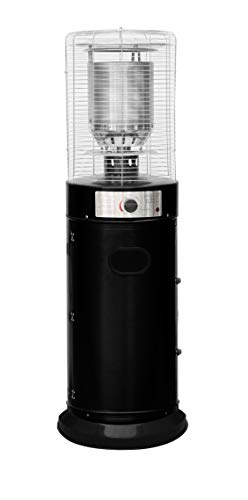The Comprehensive Guide to Gas Patio Heaters
As outdoor living ends up being increasingly popular, gas patio heaters have become an important aspect for extending the outdoor entertaining season. Whether for a comfortable evening with good friends or a dynamic household event, these heaters supply warmth and comfort that can transform any outdoor space. This article explores the various aspects of gas patio heaters, including their types, benefits, operational mechanics, maintenance ideas, and considerations for purchasing one.
What is a Gas Patio Heater?
A gas patio heater is a type of heating device designed specifically for outdoor use. Usually fueled by visit website or gas, these heaters produce warmth to fight the chill of the evening air, permitting outdoor social activities to continue even under cooler temperature levels.
Types of Gas Patio Heaters
Gas patio heaters been available in a number of different designs, each matched for various requirements and aesthetics. The common types consist of:
Freestanding Heaters:
- These are the most typical type and are typically high, with a broad base and a heater aspect at the top.
- They can quickly be moved around and are appropriate for numerous outdoor settings.
Tabletop Heaters:
- Smaller and more compact, tabletop heaters are created to rest on tables or other surface areas.
- They supply heat for smaller sized areas and are normally easier to save.
Wall-Mounted Heaters:
- These are repaired to a wall and are a great alternative for patios with limited space.
- They provide a more long-term heating solution and can complement outdoor decoration.
Patio Fire Pits:
- While not solely heaters, gas fire pits provide heat and ambiance concurrently.
- They can work as a centerpiece for outdoor gatherings.
| Heater Type | Description | Best For |
|---|---|---|
| Freestanding | Tall, mobile units with a heating aspect on the top | Big open areas |
| Tabletop | Compact designs ideal for table surface areas | Small events |
| Wall-Mounted | Fixed systems offering constant warmth | Smaller sized patios |
| Patio Fire Pits | Integrated heating and ornamental feature | Ambiance and heat |
Benefits of Gas Patio Heaters
Buying a gas patio heater provides numerous advantages:
- Extended Outdoor Enjoyment: Gas heaters permit homeowners to enjoy their patios even during chillier months.
- Quick Heating Capability: Gas heaters heat up quickly, providing instant remedy for the chill.
- User-Friendly Operation: Most gas heaters feature easy ignition controls for ease of usage.
- Visual Appeal: Many gas heaters are developed to be aesthetically appealing, enhancing the total look of your outdoor space.
- Versatile Fuel Options: Availability of both propane and gas models deals with numerous needs and choices.
Functional Mechanics
Gas patio heaters operate by converting fuel into convected heat. Here's a streamlined breakdown of how they work:
- Fuel Source: Most gas heaters utilize propane or gas. The kind of fuel impacts efficiency and schedule.
- Ignition System: Most models include either a manual ignition (utilizing a lighter or match) or an electronic ignition (push-button).
- Heating Element: Once sparked, gas streams through a burner, where it is combusted to create heat. Convected heat spreads from the heating element.
- Heat Diffuser: Some heaters have a reflector to help disperse heat more equally throughout a broader location.
Fuel Comparison
| Fuel Type | Pros | Cons |
|---|---|---|
| Propane | Portable, commonly offered | Requires tank replacement/refill |
| Gas | Cost-efficient if linked to a supply | Installation more complex |
Maintenance Tips for Gas Patio Heaters
Proper care will extend the life of gas patio heaters. Here are some important upkeep suggestions:
- Regular Cleaning: Keep the heater clean from dirt and debris. Routinely wipe down the surface areas.
- Inspect Gas Supply Lines: Check for leaks or cracks in the gas lines. Use soapy water to detect leakages by observing bubbles.
- Seasonal Checks: Before making use of a heater, check all elements and repair work or replace any damaged parts.
- Storage: During off-seasons, save the heater in a dry place or cover it for security.
- Expert Servicing: Consider an expert check-up yearly, especially for gas designs.
Considerations When Purchasing a Gas Patio Heater
When selecting a gas patio heater, keep the following elements in mind:
- Heating Capacity:
- Measured in BTUs, a greater BTU score provides more heat.
- Size and Weight:
- Depending on the space available and whether the heater needs to be portable.
- Material:
- Stainless steel heaters offer durability and resistance to rust and corrosion.
- Design:
- Choose a style that complements your outdoor decoration.
- Security Features:
- Look for automated shut-off functions or safety tilt valves to avoid mishaps.
Frequently asked questions
Q: Are gas patio heaters safe to use?A: Yes
, when utilized according to the producer's instructions and security guidelines, gas patio heaters are safe. Always make sure appropriate ventilation.
Q: How long can one propane tank last?A: A standard 20 lb
propane tank can last anywhere from 8 to 30 hours, depending on the heat setting. Q: Can gas patio heaters be utilized indoors?A: No,
gas patio heaters are designed for outdoor use just due to the danger of carbon monoxide accumulation in enclosed spaces. Q: Do gas patio heaters require assembly?A: Most freestanding designs require fundamental assembly
, while tabletop and wall-mounted options might need more
specific assembly. Gas patio heaters are an attractive solution for those aiming to improve their outdoor experiences throughout the year.
By understanding the numerous types, benefits, and functional mechanics, potential purchasers can make educated decisions that align with their requirements. Correct maintenance and safety factors to consider will make sure that these heaters remain effective and safe, offering comfort to outdoor gatherings for lots of seasons to come. With careful selection and care, a gas patio heater can become a cherished addition to any outdoor home.

